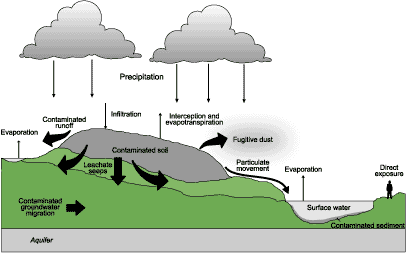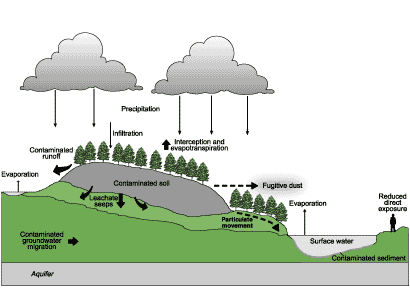Summary
What are phytoremediation and phytostabilisation?
‘Phytoremediation’ and ‘phytostabilisation’ use plants to immobilise, convert, or remove contaminants generated by industrial processes.
Conventional methods to ‘clean-up’ contaminated sites involve the removal or isolation of the contaminated soil, but these are very expensive. Phytoremediation and phytostabilisation using trees are comparatively inexpensive in-situ approaches that do not rely on the isolation or transportation of contaminated material off site.
Establishing vegetation has the potential to restrict or prevent wind erosion, leaching, surface water runoff and erosion and thus break or weaken pollutant linkages between contamination source and receptor. This is shown in the figures below where the thickness of arrows indicates magnitude of movement.
Before – without trees

After – with trees

Publications
- The Opportunities for Woodland on Contaminated Land (PDF-1018K)
Forestry Commission Information Note 44. - Integrated Remediation, Reclamation and Greenspace Creation on Brownfield Land (PDF-576K)
SUBR:IM bulletin 11
